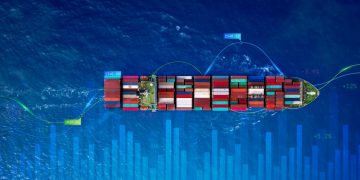The official introduction of ECDIS in shipping industry helped solve many problems (paper work load, easy planning and monitoring, real time information availability etc) as well as created some, most of which are related to human behavior and the way ECDIS systems are used. To this effect, IMO issued performance standards for systems and training standards for seafarers. The STCW has been amended encouraging seafarers with bridge watch duties to be trained through the IMO model course 1.27 for Generic ECDIS training and becoming type familiar with the on-board system through a Company established procedure.
Most people typically think of human error as “operator error”, in which the mariner makes a slip or mistake due to misperception, faulty reasoning, inattention, or debilitating attributes such as stress, or fatigue. However, there are many other important reasons for human error.
Factors affecting the human element onboard
Factors such as management, policies which pressure master and crew to stay on schedule at all costs, poor equipment design which impedes the navigator’s ability to perform safe navigation duties, improper or lack of maintenance, improper or lack of training, and inadequate number of crew to perform a task, are reasons that enhance the human “ability” to error.
Lessons learned
The following cases are some examples of already investigated accidents which concluded to be ECDIS related.
Key outcomes
Conclusions to all the above cases are almost the same. There was no technical problem with ECDIS system; it worked perfectly during all cases. All related incidents were caused by inadequate use of system or inadequate performance of crew on the bridge. Therefore, the definition as ECDIS assisted accidents is not quite accurate.
Common errors
Mistakes are found to be made during planning. The most common is the pre-request settings regarding depth. ECDIS as value requires the safety depth to be determined by the user in order to mark and color the sea area which is considered to be safe for navigation for the specific vessel at the specific time of transit.
- If this value is not set correctly, the system provides a colored area for navigation which is NOT free of dangers.
- If the value is lower than the accurate safety depth then the sea area free of dangers may include depths less than the vessel’s safety depth.
- If the value is more than the accurate safety depth then the area through which the vessel is going to navigate will be colored dark blue and dangers will not be easily identified during passage. In both cases the risk of grounding is high.
Furthermore, a common mistake is to insert setting once during the voyage. As by definition the safety depth is related to vessel’s draught and tide it should be predicted in which areas different setting should be used.
Another major error that occurs in most cases is the alarm handling procedure. Alarms on display are either disabled or without sound or worst just acknowledged without adequate feedback. Lack of knowledge on the alarm handling process or alarm interpretation may lead to such actions. Mariners may not be familiar with management and reaction when an alarm displays on the screen. In some cases critical time also lost while trying to find what went wrong. Additionally, some watch-keepers were not able to react on the identified alarm and steer the vessel to safe waters.
Moreover, ECDIS as a system produce a great amount of alarms, for different reasons, which should be handled by OOW. During a 4 hour watch the OOW may request to respond to many alarms on ECDIS display related to safety parameters set during passage planning. Most of watch keepers just press the acknowledge button without seeing or analyze the cause of the alarm and bet the safety of the vessel, crew, cargo and environment to luck. As most cases revealed the alarms indicated the upcoming accident but no one reacted.
Some other cases indicate that collisions have been occurred because OOW monitored ECDIS display and vessels without AIS indication were not seen. No one was looking out of the bridge glasses. Binoculars seem to be not useful anymore to navigators.
Action taken
The best way to avoid all the above is to integrate the ECDIS system into navigational mentality. Watch-keepers should stop navigate through the ECDIS screen as playing a video game and act as they worked with paper charts. Position verification frequently by other means is a must during watch. Radar consultation is of most important. Therefore, a good lookout keeping (by both OOW and lookout) will solve most of the problems.
It is important to remember that the eye (in cases of nearby vessels navigation) is the critical instrument for collision avoidance. ECDIS mindset is to be established by all; Mariners, Companies, organizations and states are advised to use ECDIS as the best tool to face navigational challenges.


































































Have you seen any progress in this area since this article was published?